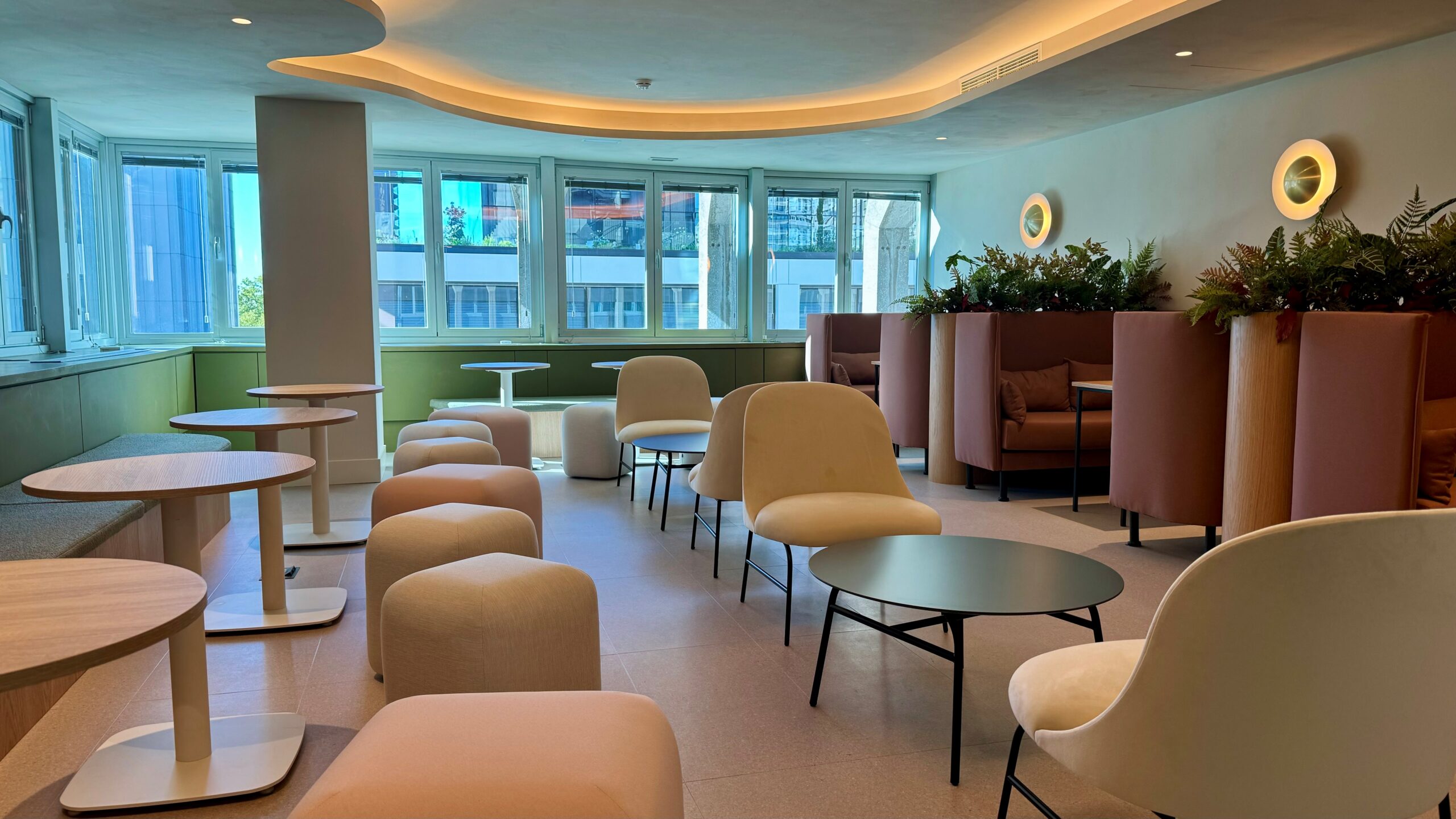The world of work has undergone an unprecedented revolution in recent years. The global pandemic, technological advancement and changing employee expectations have accelerated the transition to new work models that prioritise flexibility, adaptability and well-being. In this context, flexible workspaces have emerged as a key solution to meet the needs of modern businesses and professionals. This article explores in depth what flexible workspaces are, their benefits, and how they compare to traditional offices today.
What are Flexible Workspaces?
Flexible workspaces are environments designed to accommodate the diverse needs of individuals and businesses. Unlike traditional offices, which often require long-term commitments and offer little room for adjustment, flexible spaces allow users to choose how, when and where they work, depending on what best suits their particular situation. This can include anything from renting an office for a few hours, to private offices for weeks or months, at Ibercenter we understand this need and offer all of these options.
These spaces are often equipped with state-of-the-art technology and a variety of shared services ranging from high-speed internet to lounge areas and coffee shops. They also offer an environment that fosters collaboration and networking, which is especially beneficial for entrepreneurs, startups and small businesses looking to grow in a dynamic environment.

Evolution of Workspaces: From the Traditional Office to the Flexible Workspace
Traditionally, offices have been seen as the core of work. They were designed to be a fixed location where employees spent most of their working day. However, over time, the needs of companies and workers have changed dramatically, driven by a number of factors:
Digitalisation and remote working: The ability to work from anywhere thanks to technology has reduced the need to be physically present in an office.
Changing employee expectations: New generations of workers increasingly value flexibility and the ability to balance their work and personal lives.
Globalisation: Companies often operate in multiple locations and time zones, requiring greater adaptability in workspaces.
Comparison between Flexible Workspaces and Traditional Offices
1. Commitment and Flexibility
Traditional offices: Traditional offices generally require long-term leases, which can be a limitation for growing companies or those experiencing fluctuations in their number of employees. This leasing model can be costly and inflexible, especially if the company needs to adjust its office space frequently.
Flexible workspaces: They offer the ability to scale up or down according to the current needs of the business. This means that a company can start with a single desk and, as it grows, expand its space within the same environment without the complicated processes of moving or renegotiating contracts. Flexibility also extends to schedules, as many spaces are available 24/7, allowing employees to work at times that best suit their lives.
2. Costs
Traditional offices: Leasing a traditional office involves a significant financial commitment, including not only the lease of the space, but also the costs associated with furniture, technology, utilities, maintenance, and more. In addition, these offices require a considerable upfront investment to adapt the space to the specific needs of the company.
Flexible workspaces: In comparison, flexible workspaces offer a more cost-effective solution. Costs are often based on a pay-as-you-go system, which means that companies only pay for what they actually need and use. There is no need to worry about maintenance costs, as these are included in the fee. In addition, shared services, such as meeting rooms, printers and reception staff, allow companies to save on additional operational costs.
3. Design and Comfort
Traditional offices: The design of a traditional office is often determined by the owner or landlord, with limited options for customising the space. While some companies invest in creating attractive and functional work environments, many traditional offices follow a rigid and uninspiring design that may not encourage creativity or productivity.
Flexible workspaces: These are designed with adaptability and convenience in mind. They often offer a variety of design options, from open workstations to private offices, meeting rooms and common areas that encourage interaction and collaboration. Flexible spaces also tend to be more aligned with current trends in office design, such as incorporating natural light, ergonomic furniture, and green areas. These elements not only improve employee well-being, but can also increase productivity and job satisfaction.
4. Culture and Collaboration
Traditional offices: Traditional offices can foster a strong sense of organisational culture, as employees work together in a fixed and familiar space. However, this environment can also be less dynamic, and interaction is limited to employees of the same company.
Flexible workspaces: Foster a more collaborative environment, where professionals from different industries and companies work together in the same space. This mix can lead to the creation of new ideas, business opportunities and partnerships that otherwise would not have arisen. In addition, coworking spaces often organise events and activities to promote networking and interaction among their members, thus strengthening a culture of innovation and cooperation.
5. Technology and Infrastructure
Traditional offices: Traditional offices require companies to install and maintain their own technology infrastructure, which can be costly and time-consuming. Upgrading equipment and implementing new technologies can be ongoing challenges.
Flexible workspaces: They are equipped with modern technology from day one. This includes high-speed internet, video conferencing systems, printers and audio-visual equipment, all of which is available to users without the need for additional facilities. Infrastructure management is also handled by the space provider, allowing companies to focus on their core business without worrying about technological issues.
Benefits of Flexible Workspaces
1. Response to the Need for Flexibility
The demand for flexibility is perhaps one of the most significant changes in the way people work today. Employees no longer want to be confined to a single location or a fixed schedule. Flexible workspaces allow companies to offer their employees the option of working from different locations, at times that suit their needs, without sacrificing productivity.
2. User-Centred Design
These spaces are designed to be adaptable, with areas that can be configured to meet a variety of needs. Whether you need a private office, a meeting room or an open space for collaboration, a flexible environment can quickly adjust to your requirements.
3. Modern Technology and Infrastructure
Equipped with the latest technology, flexible workspaces ensure fast and reliable connectivity, essential for remote working and real-time collaboration. In addition, they often feature infrastructure that supports sustainability, such as natural lighting and ergonomic furniture.
4. Shared Services
A great benefit of these spaces is access to a variety of shared services. From high-speed internet and equipped meeting rooms, to cafeterias and breakout areas, everything is designed to make the working day more efficient and enjoyable.
5. Talent Attraction and Retention
Flexible workspaces are attractive to modern employees who value autonomy and work-life balance. Offering the possibility to work in a dynamic and comfortable environment can be a decisive factor in attracting and retaining talent, especially in a competitive labour market.
6. Innovation and Creativity
The diverse and collaborative environment offered by flexible workspaces can foster innovation and creativity. Interaction with professionals from different fields and exposure to new ideas can inspire employees to think differently and develop innovative solutions to the challenges they face.
7. Scalability and Adaptability
For growing businesses, flexible workspaces offer a scalable solution that can quickly adapt to changing needs. This means that a company can scale its space up or down as it grows or restructures, without the limitations of traditional office leases – the ability to quickly adjust the size of equipment or workspace can make the difference between success and failure.
8. Strategic Location:
Many flexible workspaces are located in key areas of the city, making them easy to access and reducing commuting times. Some are even part of global networks, allowing you to work from different locations as required.
Conclusion: The Future of Work is Flexible
In a world where adaptability and agility are essential, flexible workspaces offer an attractive and effective alternative to traditional offices. For any type of business, whether it is a startup, SME, large corporation or freelancer, these spaces provide the tools, technology and environment needed to enable growth in these times.
The ability to customise and adjust the work environment according to individual and company needs not only reduces costs, but also improves employee productivity and well-being. As more companies recognise the benefits of this approach, flexible workspaces are likely to continue to expand and evolve, establishing themselves as the working model of the future.
The Future of Work Is in Flexibility
In our office and coworking space, we’ve designed every corner to provide you with the most conducive environment for success, whether you’re a solo entrepreneur, a growing startup or an established company looking to expand.
We invite you to discover how a flexible workspace can transform the way you work and take your productivity to the next level!
Book a visit today and find out how we can help you build the future of your business!






